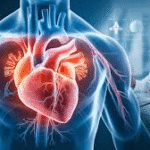Eating a balanced diet is one of the best things you can do for your health. It helps your body get the energy and nutrients it needs to stay strong, feel good, and fight off illness. If you’re not sure where to start, don’t worry. This simple guide will help you plan a balanced diet step by step.
1. Understand What a Balanced Diet Is
A balanced diet includes the right amounts of all the main food groups. These groups give your body what it needs to grow, heal, and stay healthy. A balanced diet includes:
- Fruits and vegetables
- Whole grains
- Protein-rich foods
- Dairy or dairy alternatives
- Healthy fats
2. Fill Half Your Plate with Fruits and Vegetables
Fruits and vegetables are rich in vitamins, minerals, and fiber. They help protect you from disease and keep your body working well. Try to eat a variety of colors and types each day. Fresh, frozen, or canned (without added sugar or salt) are all good choices.
3. Choose Whole Grains
Whole grains are better than refined grains because they have more fiber and nutrients. Choose brown rice, whole wheat bread, oats, or quinoa instead of white rice or white bread.
4. Include Lean Protein
Protein helps build muscles and repair the body. Good sources include chicken, eggs, beans, fish, nuts, tofu, and lentils. Try to choose lean or plant-based options more often and avoid fried or processed meats.
5. Don’t Forget Dairy or Alternatives
Dairy gives you calcium and vitamin D, which are good for bones and teeth. If you can’t have dairy, go for plant-based milk like almond or soy milk that are fortified with calcium.
6. Add Healthy Fats
Your body needs some fat to work properly, but not all fats are good. Choose healthy fats like olive oil, avocados, nuts, and seeds. Avoid trans fats and limit saturated fats found in fried or processed foods.
7. Drink Plenty of Water
Water keeps you hydrated, helps digestion, and supports your body’s functions. Try to drink about 6–8 glasses a day, and more if you’re active or it’s hot outside. Cut back on sugary drinks like soda and juice.
8. Watch Your Portions
Even healthy food can be too much if you eat too much of it. Pay attention to portion sizes. Eating slowly and stopping when you’re full can help you avoid overeating.
9. Limit Added Sugar and Salt
Too much sugar and salt can lead to health problems like heart disease and high blood pressure. Try to eat fewer processed foods, sweets, and salty snacks. Check food labels to see how much sugar or salt is in what you eat.
10. Plan Ahead
Planning meals and snacks ahead of time can help you make healthier choices. Make a shopping list, cook at home more often, and keep healthy snacks like fruit or nuts nearby.
Conclusion
A balanced diet is not about being perfect. It’s about making better choices most of the time. Start small, be patient, and make changes that you can stick with. Over time, eating healthy will become a normal part of your life, and your body will thank you for it.










Leave a Reply